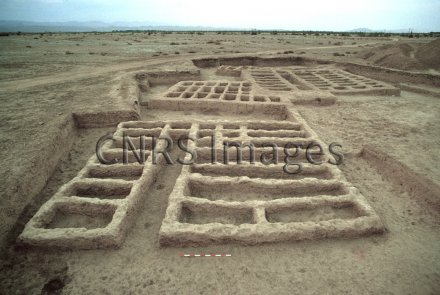Production year
2007

© David SARMIENTO-CASTILLO /Gonzague QUIVRON / Aurore DIDIER / Mission archéologique de l'Indus / CNRS Images
20160106_0002
The MR2 archaeological site at Mehrgarh, in present-day Pakistan, occupied from 4,500 to 3,600 BC. At Mehrgarh in the 1980s, a copper amulet from the ancient Chalcolithic period was discovered on land settled 6,000 years ago. The secret of its manufacture has been revealed thanks to a new approach using UV/visible photoluminescence spectral imaging. This amulet is the oldest known object made by the lost wax process. This process uses a model sculpted in a material such as beeswax, which is then encased in clay. Wax melts at low temperatures so it runs out easily when the clay is heated. Molten metal is then poured into the empty clay mould, taking the place of the wax.
The use of media visible on the CNRS Images Platform can be granted on request. Any reproduction or representation is forbidden without prior authorization from CNRS Images (except for resources under Creative Commons license).
No modification of an image may be made without the prior consent of CNRS Images.
No use of an image for advertising purposes or distribution to a third party may be made without the prior agreement of CNRS Images.
For more information, please consult our general conditions
2007
Our work is guided by the way scientists question the world around them and we translate their research into images to help people to understand the world better and to awaken their curiosity and wonderment.